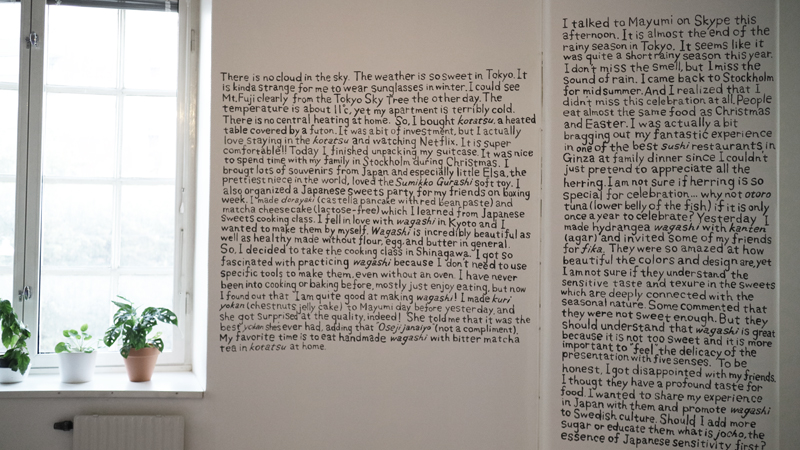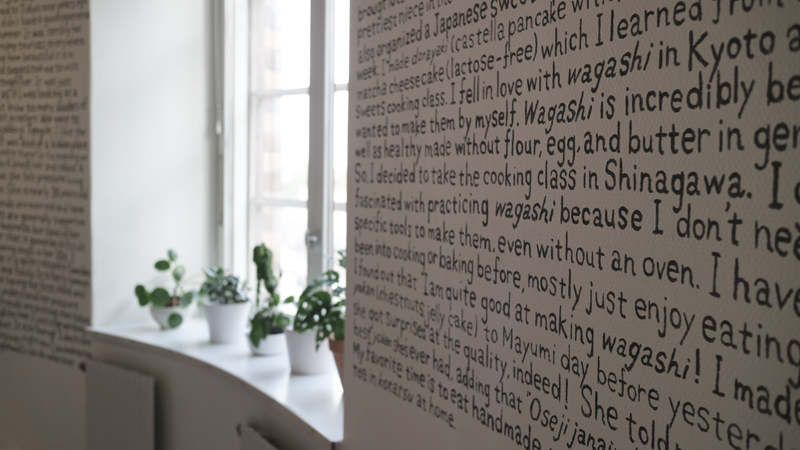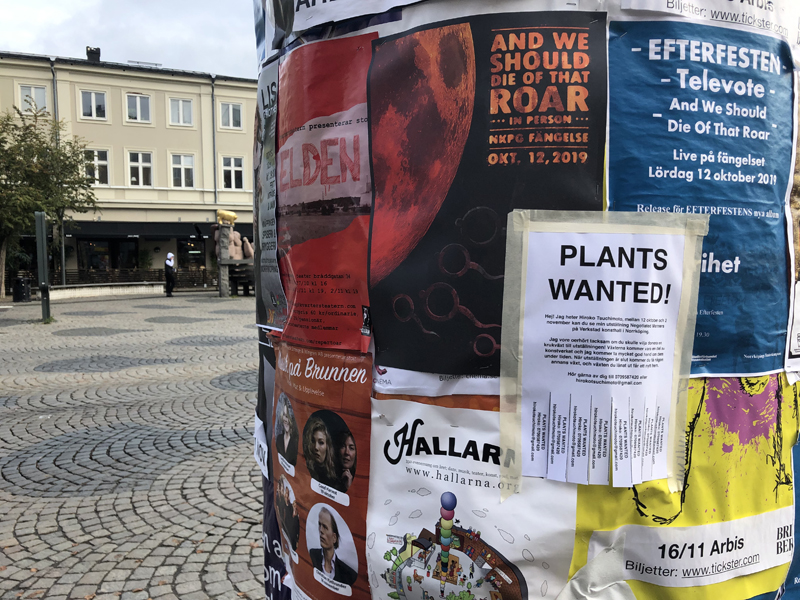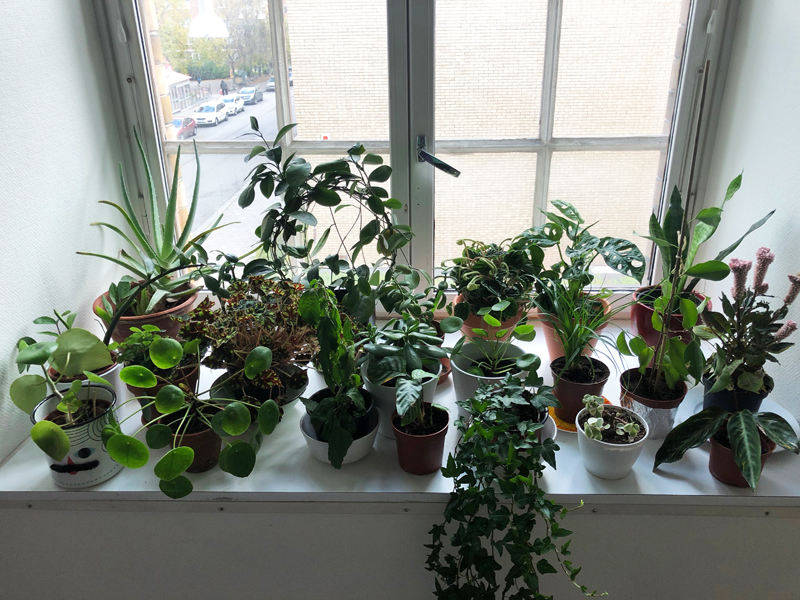
Installation presented at the solo exhibition at Verkstad konsthall, Norrköping, Sweden
The exhibition Negotiated Manners consisted of textile and text-based installation, and relational activity. In response to life in a contradictory society that both appreciates individual freedom and personal control and suffers from loss of intimate relationships, Tsuchimoto suggests reevaluating the concept of negotiation in association with interpersonal and intercultural communication. She redefines negotiation as the state of processing something, especially highlighting it as the process of social interaction which involves adjustments in the experience of self and engagements in fluid relationships. For the textile installation, Tsuchimoto carefully chose the materials and used craft techniques to create humorous contrast with (banal) questions and multiple-choice answers, which invited people to imagine different social situations and observe their behavioral patterns in daily life. This Q&A conveys the concept of performativity reflecting on social norms and criticizes the demands of social contexts. Viewers could then proceed to read a handwritten text on the gallery walls. Tsuchimoto addressed identity negotiation through a fictional travelogue, which is associated with her personal experiences with moving between familiar and unfamiliar cultures, which include the struggle of “becoming”, and the emotions accompanying acceptance and rejection. She used the fictional story as a tool to project people’s expectations and stereotypes towards the Other. In between the text-filled walls, there were house plants exhibited on the window sills. She asked local people to donate their house plants for her exhibition through an online network, street posters, and talking to people directly, a challenge to be strange and a stranger. She exhibited the plants and attentively took care of them during the exhibition. The donators received someone else’s plant(s) back after the exhibition and became the new owners of the plant. By facilitating people to participate in this communal activity and negotiating the boundaries of individuals, she generated temporary relations and trust with the donators as well as an imaginary bond with strangers.





